Reorg: Essential Guide for HR Leadership in Organizational Design
Master reorg with our guide on organizational restructuring, HR leadership, and innovative organizational design for successful company...
Even in tough times, CEOs find a way to win. By simply restructuring their company. Learn how in this guide to restructuring an organization.
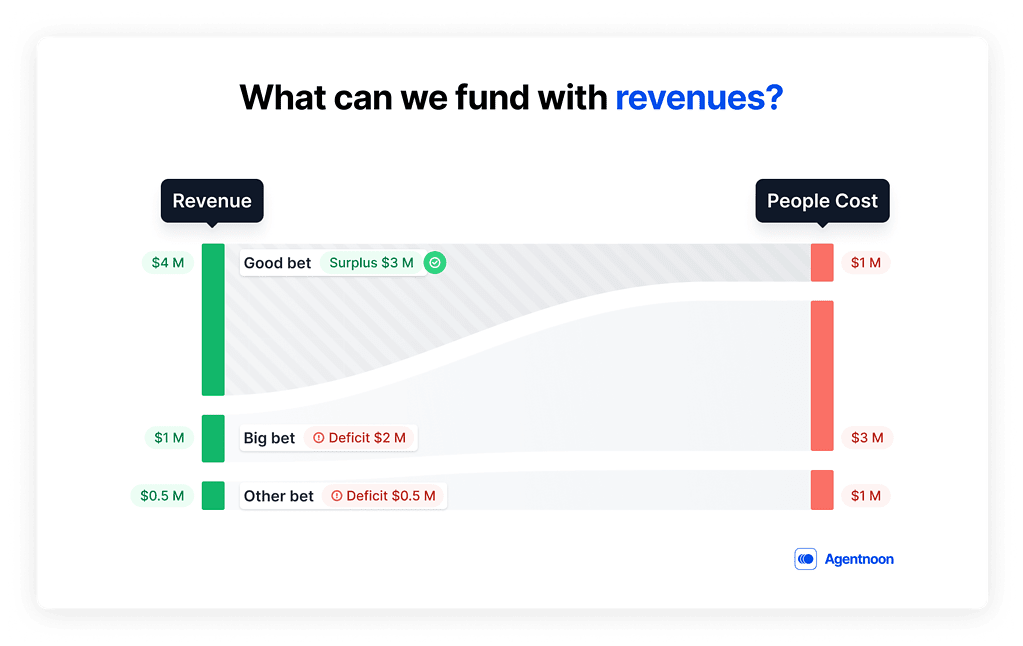
Good CEOs find a way to win. Even during tough times. Winning CEOs often pick up market share during a downturn simply by staying alive. But staying alive is hard.
Even in good times, most companies never reach product market fit. The rest kill themselves by scaling hiring and expenses too early. In bad times, this means certain death.
Winning CEOs in bad times can redesign their business around one question “What can we fund with revenues?”
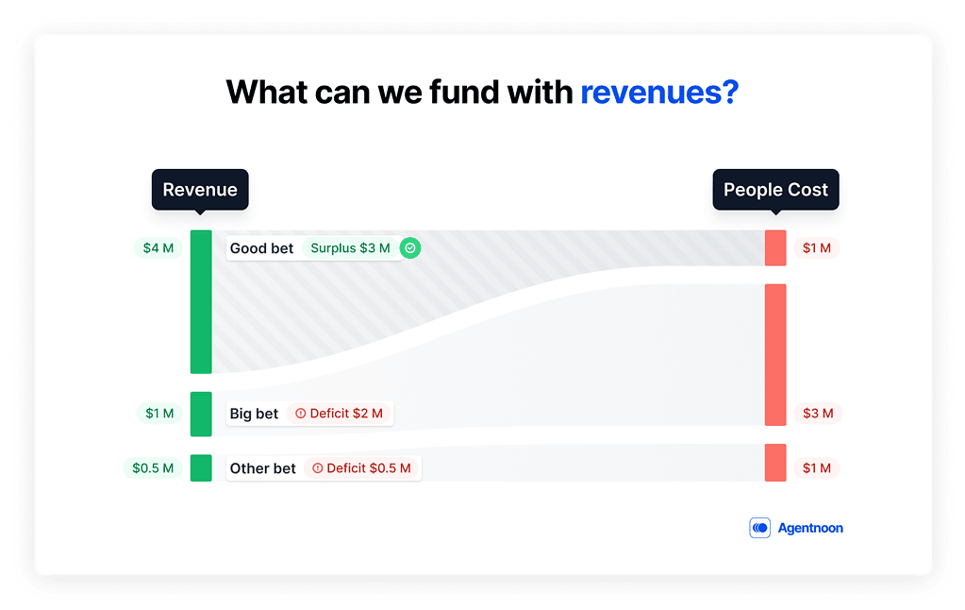 In the old days, organizational restructuring would take teams years of planning & physical relocations to change course. Today, winners re-organize their businesses dynamically. Budgeting, forecasting, and board reporting is a 7-figure problem for most CEOs. Yet it’s done with the most rudimentary tooling.
In the old days, organizational restructuring would take teams years of planning & physical relocations to change course. Today, winners re-organize their businesses dynamically. Budgeting, forecasting, and board reporting is a 7-figure problem for most CEOs. Yet it’s done with the most rudimentary tooling.
The new way: Start with the company’s single largest bi-weekly expense, and attribute it to revenue. People are the largest cost in a company. CEOs need to clearly identify how their people costs drive revenue.
In times of low interest rates, companies keep hiring people to do irrelevant things. When fundraising is a breeze, hiring is is more a function of cash in the bank versus whats needed. There are spreadsheets flying around and near zero traceability of actions to outcomes. This happens to every leader and gets worse in higher-growth environments.
The dream product combines HR, finance, and business data. All in one place. So you can attribute revenue to groups of people.
Attributing revenue to groups of people is hard for global, cross-functional teams. A conventional finance person will deem it time-consuming, error-prone, and impossible to replicate on a weekly basis.
Luckily there’s a solution.
Over the last year, we’ve worked with 30+ top business leaders to help them improve efficiency across global workforce planning, saving 7-10% of headcount budget for CEOs, 1 day per week for people teams, and convincing the leadership team (including skeptical finance leaders) to become true believers.
In this guide, we’ll dive deep into:
Agentnoon connects people, finance & business data to attribute revenue to people. It works quickly, and accurately and updates in real-time – while maintaining confidentiality.
Even in tough times, good CEOs will find a way to win. Winning CEOs often pick up market share in a downturn by simply staying alive.
Even in good times, most CEOs never reach product market fit. Most companies kill themselves by scaling hiring & expenses too early. In bad times, winning means staying alive. The times of growth at all costs are now over. We are in one of the worst bear markets in the last 90 years.
Time for “less is more”. For everything except positive cashflows.
.jpeg?width=811&height=550&name=b45881fe51a05b81a4122d1fe8ff0153%20(1).jpeg)
Raising money is easy, but making money is hard.
For the last 8 months, investors have been calling for cost cuts. Given the rising interest rates, public market collapse, and layoff season, it’s unlikely that companies can keep raising. Outliers like OpenAI are an exception.
Open AI is founded by Elon Musk, Sam Altman, Peter Thiel, Reid Hoffman, Jessica Livingston, Greg Brockman, and Ilya Sutskever, and is backed by Microsoft, earlier AWS, and Infosys. They got to a million users in 5 days on ChatGPT.
Are you a company like OpenAI?
Even if you got a million users in a week, there’s still work to be done.
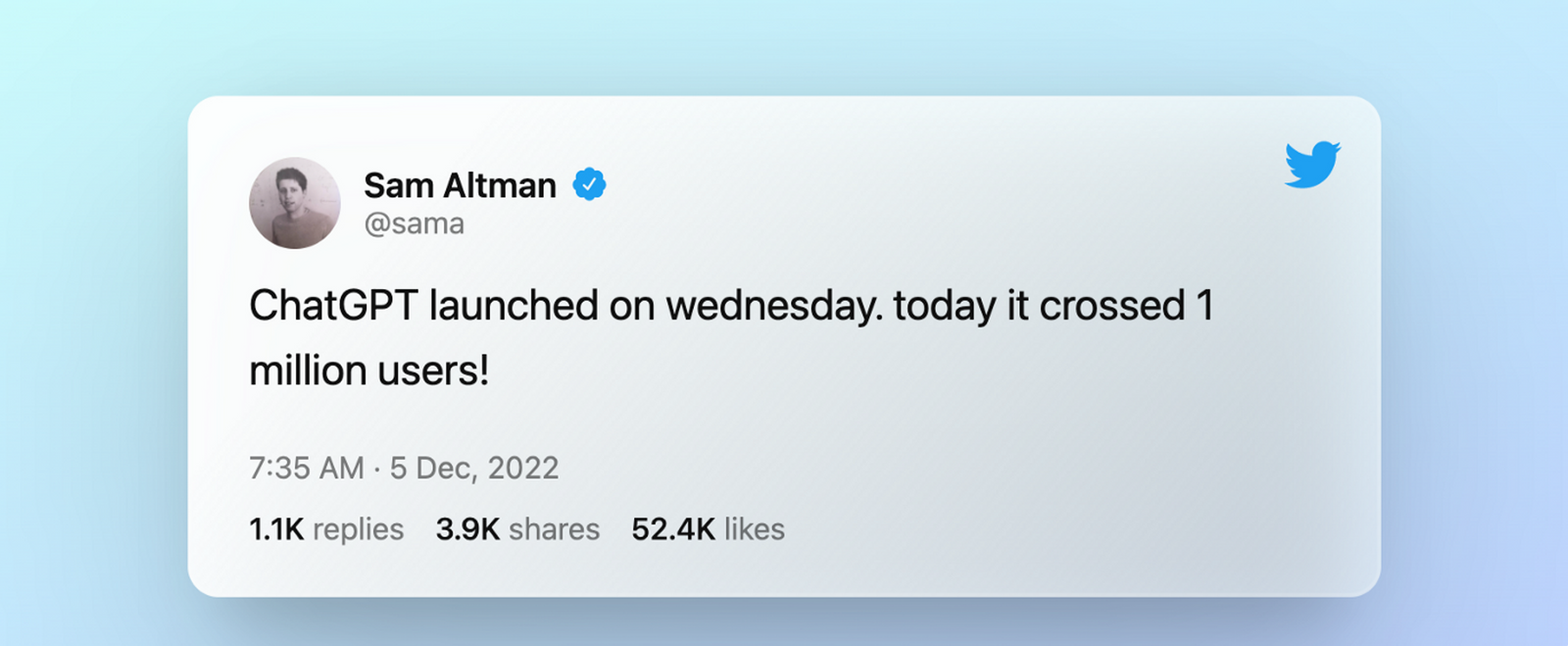
Today, there are 1,200+ unicorns. But not all of them are going to make it.
In May 2022, the Managing Director of Y Combinator (YC), Michael Seibel sent out a warning message to all YC companies to plan for the worst. It also appeared in the press shortly after.
Takeaway: The economic downturn is here. Time to prepare for the worst after a 13 year bull run. If you think this doesn’t apply to you (overconfident maybe?), at least keep an eye on your costs regularly so you don’t drive off a cliff at full speed.
Upon reading Michael’s message, my first thought was “time for the cockroach plan”.
In Feb 2022, the YC group partners asked us to come up with a “cockroach plan”, a plan for the situation where we would not raise any money after Demo Day. It most likely comes from this article by Paul Graham where he says:
“The most likely animals to survive after a nuclear war are cockroaches because they’re so hard to kill. That’s what you want to be as a startup. Instead of a beautiful but fragile flower that needs to have its stem in a plastic tube to support itself, it’s better to be small, ugly, and indestructible.”
The first versions of most cockroach plans were cosmetic, to appease the partners. Group partners rubbished them immediately and pushed CEOs to try harder. Real cockroach plans emerged that were more pragmatic, spending as little as possible until revenues would fund the business.
What is your cockroach plan? Don’t worry if you don’t have one. Be scared if you think you don’t need one. If you think you are indestructible, and later find out you were fooling yourself, it’s going to suck.
Winning CEOs redesign their business based on one crucial question:
“What can we fund with revenues”?
It’s the same question every board member is (or should be) asking the CEO.
They’re all different ways of asking the same thing.
Winning CEOs have multiple plans to run their business. There is the best case, base case & worst case plan. I was surprised to see that many CEOs’ worst-case plan was also optimistic. So let’s keep calling our plans “cockroach plans” in case there is ambiguity.
In the old world, it would take teams months of planning to figure out what they could fund with revenue. Laggy data and imperfect information force leaders to drive while looking in the rearview mirror. Implementation requires physically moving people & equipment, taking months for a business to change course if executed perfectly.
Every business leader wants to maximize (x) where x is the cash flow generated by business activities minus the efforts required to generate them. This was true 100 years ago, and will likely be true in the future.
Improving cash inflows means everyone in the business is focused on sales. No sales = no business. For sales teams, it’s straightforward to map revenue to salespeople (e.g. a good salesperson brings in 5-10x of their salary). Ratios of sales by company stage/industry should be baked into every plan.
Let’s talk about cash outflows. The single largest bi-weekly expense for a company is people. And it’s being managed in a borderline negligent way.
When I started validating the problem in late 2021, 30% of the leadership teams I spoke to explained to me that I was solving the wrong problem. Their burning problem wasn’t lack of revenue 😆, but hiring 500 A+ people next year. A lot of them already shut down, and most of them will be unable to recover in time unless they do a hard reset on their business.
In today’s world, winners quickly focus on successful projects, redesigning their businesses electronically. Steve Jobs called them “electronic organizations” back in 1990.
CEOs need to find a better way to allocate limited resources to winning projects. Winning projects are the ones that produce the most revenue for the least effort. Attributing revenue to groups of people is hard for global, cross-functional teams.
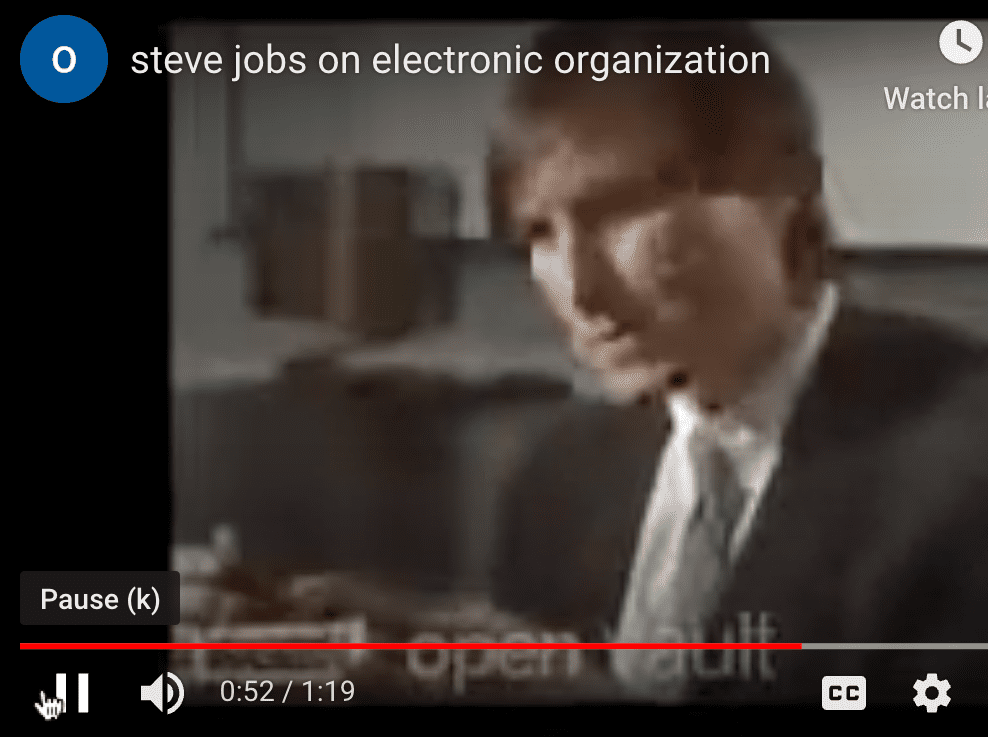
Full transcript of the interview available here
“As business conditions change faster and faster with each year, we cannot change our management hierarchical organization very fast relative to the changing business conditions.
We can’t have somebody working for a new boss every week. We also can’t change our geographic organization very fast. As a matter of fact even slower than the management one. We can’t be moving people around the country every week.
But we can change an electronic organization like that 🫰( snaps fingers)”
Steve Jobs
It’s hard to do, takes a lot of time, is not straightforward (except for sales, however, there are billion-dollar companies focused on sales compensation alone so maybe that is complicated too) and can get political. So CEOs end up asking their finance/ops team, hiring a consultant, or starting a data team.
The finance team would need to get a lot of people to fill in spreadsheets, which will take time & yield incomplete results. In addition, the data will be hard to visualize, and any changes will be hard to incorporate. Finally, keeping the analysis updated as the people/teams change will be near impossible.
One thing a finance person hates is asking people to report data that they have no incentive of reporting.
Consultants like McKinsey/BCG/Bain* cost $1M+ a month, and alongside ex-operators turned consultants don’t have the agency to do this type of work. In both cases, you get good-looking slides (cosmetics) & no continuity.
Consulting firms find it hard to attribute their own revenue to people groups. Ask a consulting partner, and you’ll know.
You could boot up a PowerBI/Tableau instance and build an in-house data team. That data team needs to be deployed in so many places that revenue attribution falls off the list. For example, how to increase revenue should be the top priority of the BI team.
A shared BI resource is the best way to apply lipstick to certain pigs, that would otherwise have been ignored. So in the best case, you may get a dashboard, but it’ll be marginally better than your current plans.
Data teams get hijacked by other priorities, and no one wants to piss off the data team since you might need them at short notice someday.
Paul Graham has a favorite question to ask founders. Assuming expenses remain constant and their revenue growth is what it has been over the last several months, do they get to profitability on the money they have left?
The startling thing is how often the founders themselves don’t know. Half the founders I talk to don’t know whether they’re default alive or default dead.
Paul Graham – default alive or dead
source: http://www.paulgraham.com/aord.html
If you are default dead, the urgency is even higher.
It is hard to figure this out with good fidelity & repeatability. Tech companies have cross-functional teams, employees, and contractors in multiple geographies, and multiple integrations between systems. Lots of data, with reporting lags & incorrect information.
There is also no clear owner to manage and maintain data integrity across systems. So companies have data all over the place, confusion between positions on the org hierarchy & the roles they play in generating revenue, and individual preferences about certain projects. Every company has pet projects, that consume a lot of resources but drive little when it comes to revenue.
What’s needed is a set of tools that work with people, finance & business data to attribute revenue groups to people. It works quickly, and correctly and updates every time anything changes – so that leadership teams can see where their plans are working, and where they are not.
What we want is to map revenue to a variable. Let’s call it foo which can be groups of people.
Map revenue to foo
WHERE FOO IS GROUPS OF PEOPLE
foo can be departments, products, teams, areas, strategic initiatives, grand challenges, company goals, etc. The fact that everyone calls it something else is a signal of diversity in how companies organize themselves to drive positive cashflows.
The trouble is that there are three separate stakeholders; no one is building for them to work together. Each of them defines foo in their own way.
CEOs have goals. CEOs want to pile up positive cash flows, by designing plans with the core team, identifying HR impacts, approving plans & executing (swiftly) to stay alive.
HR has departments. HR leaders need to collect & align data across all functions, and seniority levels, drive with analytics and save time to be able to do the other important tasks like performance, culture & engagement.
CFO has cash flows & balance sheets. CFOs need to make sure there’s enough money. CFOs need to gate-keep new headcount commitments, align cash flows & costs to financial models & track cross-functional people costs. Also, report all the numbers to BoD and leadership.
Everyone else (VPs, GMs, Heads, Directors, …) needs people to get things done.So they find whatever ways they can to secure the resources, and achieve their goals. You can already see how everyone is playing for the same team, but moving in different directions.
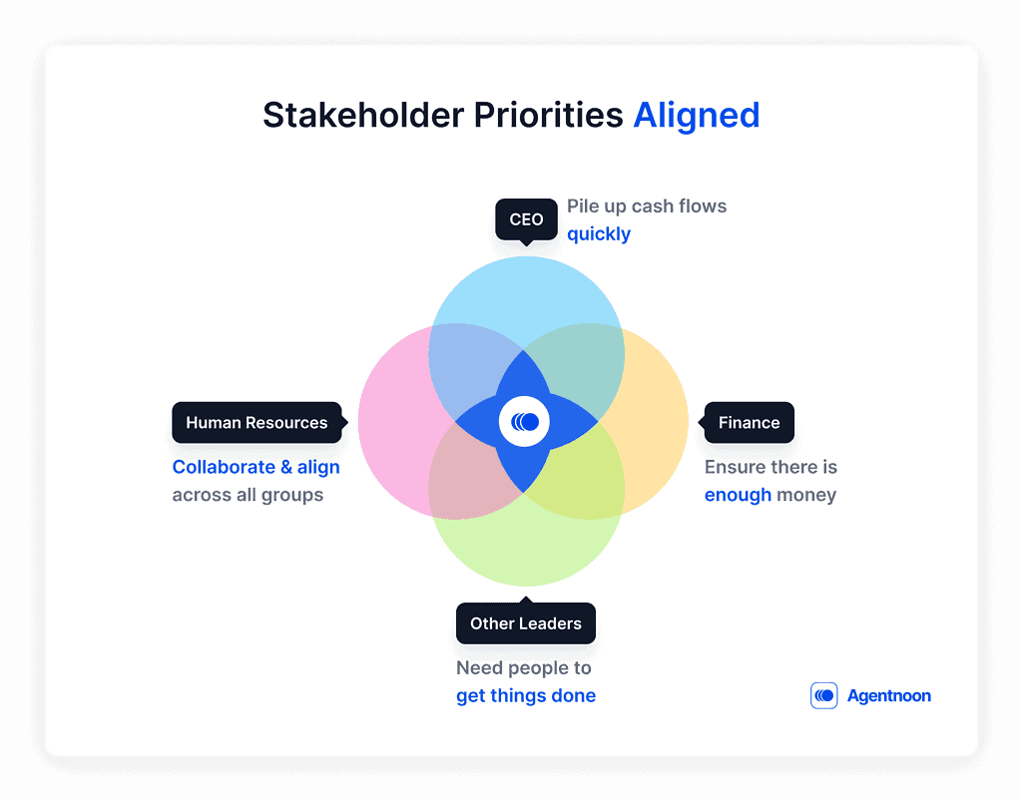
When all of this works well, you get a statement like the following. Here’s the problem (need to change the business), here’s the solution (organizational scenarios with cost simulations), here are the steps (we need finance to do X, Y, Z and HR to do A, B, C) and here’s how much time it takes to get you to point I, J, K.
You’re probably wondering, “Isn’t this already being done?”
Imagine you are an ER doctor, and a CEO walks in with a gunshot wound to his knee. Would you treat the gunshot wound or talk about how they should get some botox since that will make them look good on Instagram?
A lot of tools & processes for workforce planning are focused on cosmetics. Individually they are sensible, but collectively they struggle with contact with reality since so much falls through on the handovers.
We are building software for CEOs. Over the last year, we’ve worked with 30+ top leaders to help them improve efficiency across global workforce planning, saving money for CEOs, time for people teams & converting the leadership team, including skeptical finance leaders to true believers. Let me show you how we do it.
Does this feel like a lot of work? It should. We’ve been doing it so often we’ve made it a lot faster & easier, so you can go from zero to focused in a few hours. Here’s a simple five step process
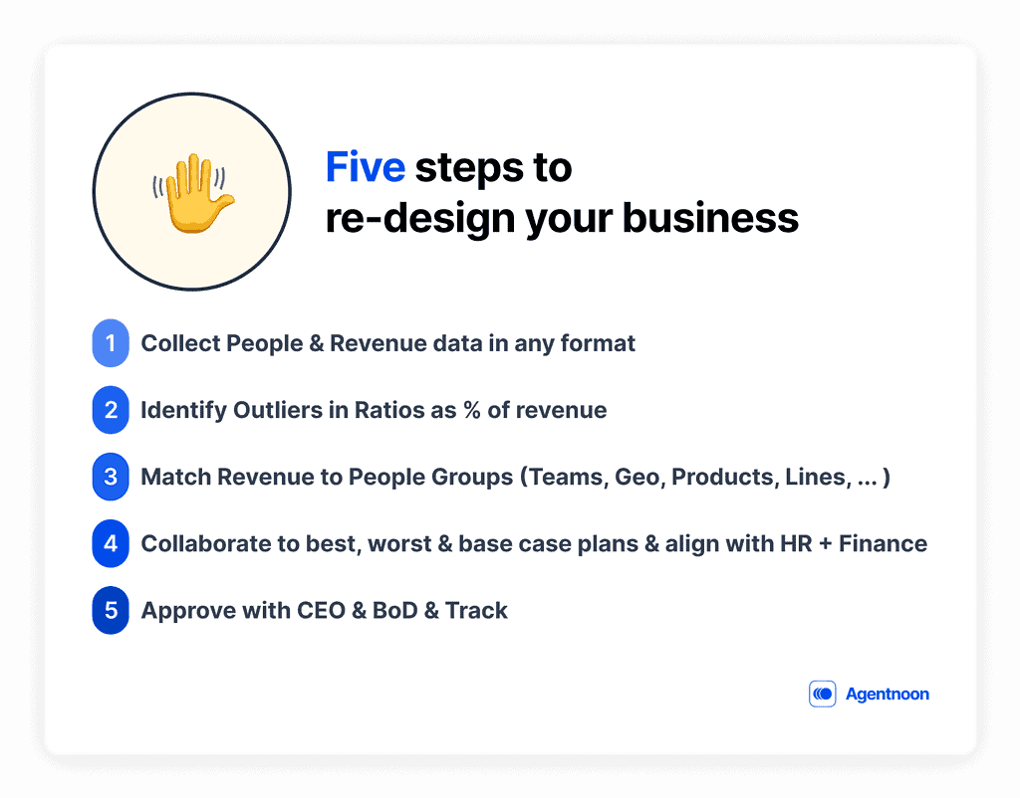
Understand that data is a mess, out of date & ugly. We built proprietary technology to ingest ugly data quickly and use our product to visually debug and learn so every update enhances the outputs.
Let me show you how it works. We’ve taken a sample company with $5M in revenues & $15M in people costs. It’s now time to dig in and think about ways to restructure this organization.
We can start by mapping people costs to the departments in a business, and highlighting where the company might be over/underspending since neither is efficient. For example, is my R&D as a % of spending too high
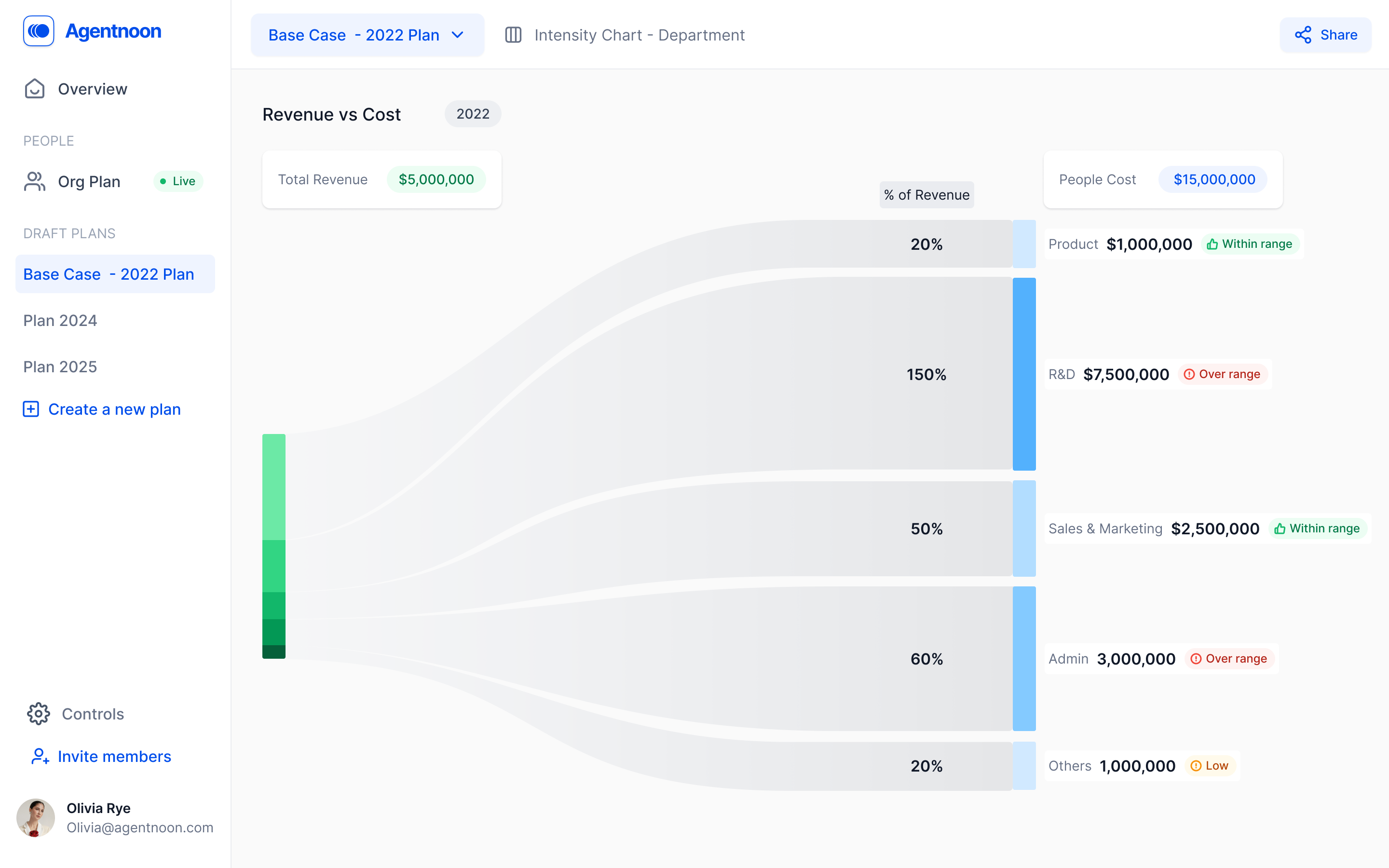
The next step would be to attribute revenue to groups of people in the business.
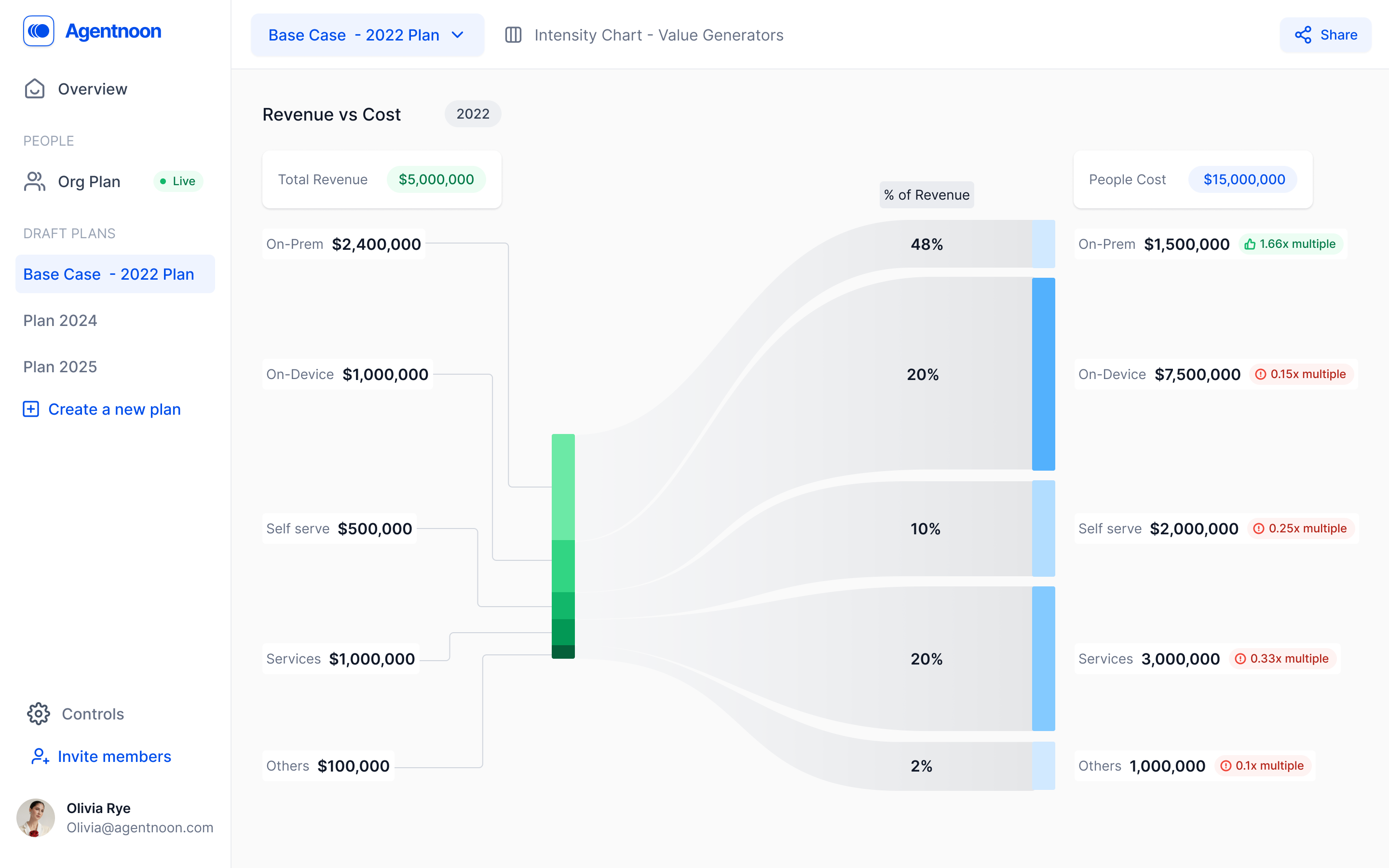
Attributing salespeople to revenue is straightforward, but what to do with product, engineering, R&D, and other functions. Many times people are working on multiple things, so an engineer can’t be directly allocated to a single goal/product line. We’ve been working with our customers to develop a simple way to get this done, it requires making people & role-based planning work together instead of against each other.
What is needed is getting the CEO, heads of Finance, HR, and eventually all department heads on the same page as to the organizational scenarios and cost structures ahead, in order to make a decision.
Here’s an example of how it works for a highly cross-functional team to balance roles & positions across the organization. A quick drag & drop aligns people to teams, and new functions can be planned in the context of revenues.
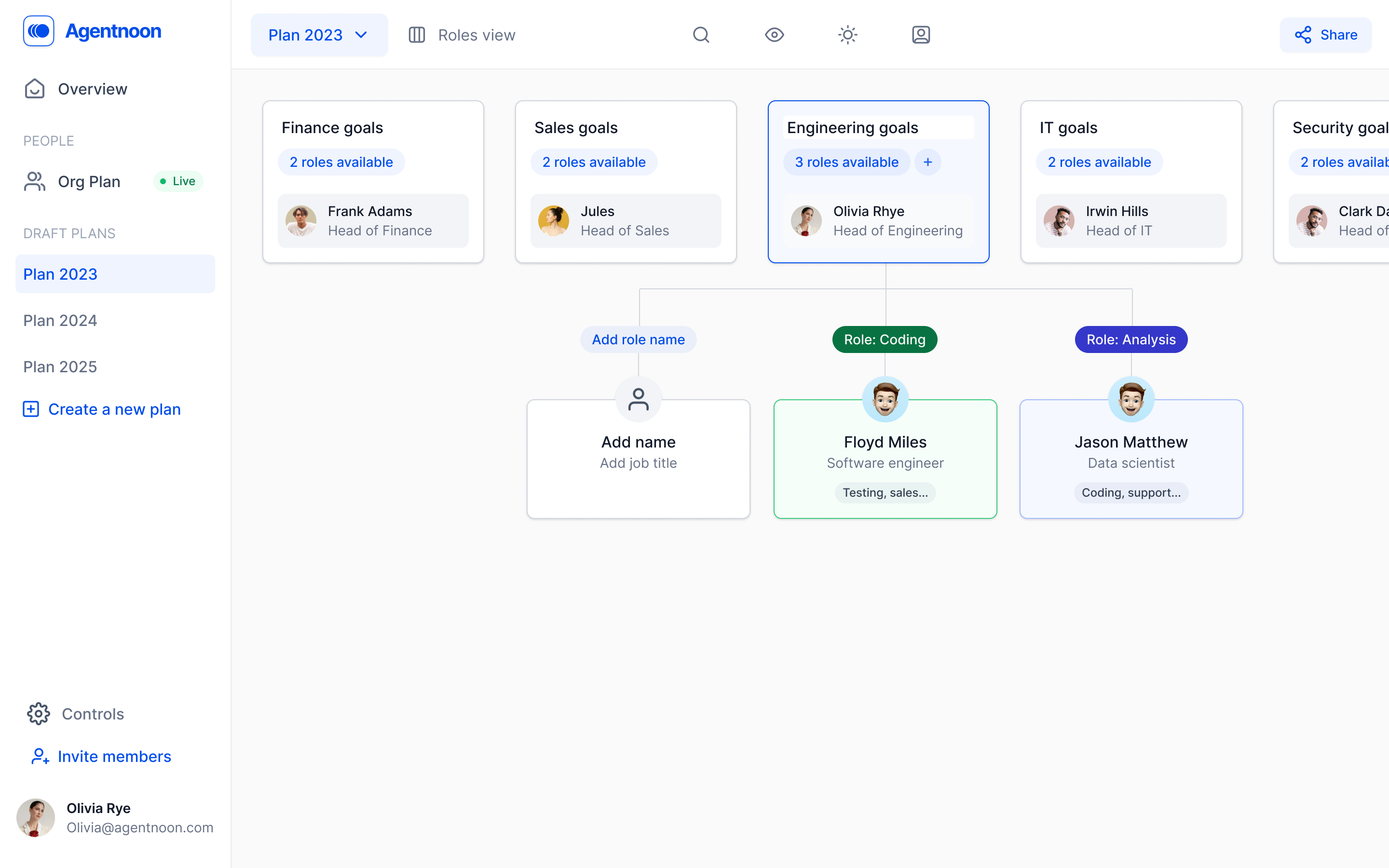
Most common – taking a solo warrior approach to restructuring. It’s important to work with a close group that has skin in the game, and then make decisions on facts vs. hope to drive changes. Early-stage reorgs are even harder since the data is more sparse. In some aspects, its easier too, since missionaries are hired in the early days and will put their mission ahead of other things like organizational clout.
Here’s a simple flow one of our early customers put together when we were brainstorming how to involve more team members as they respond to changes in their organization
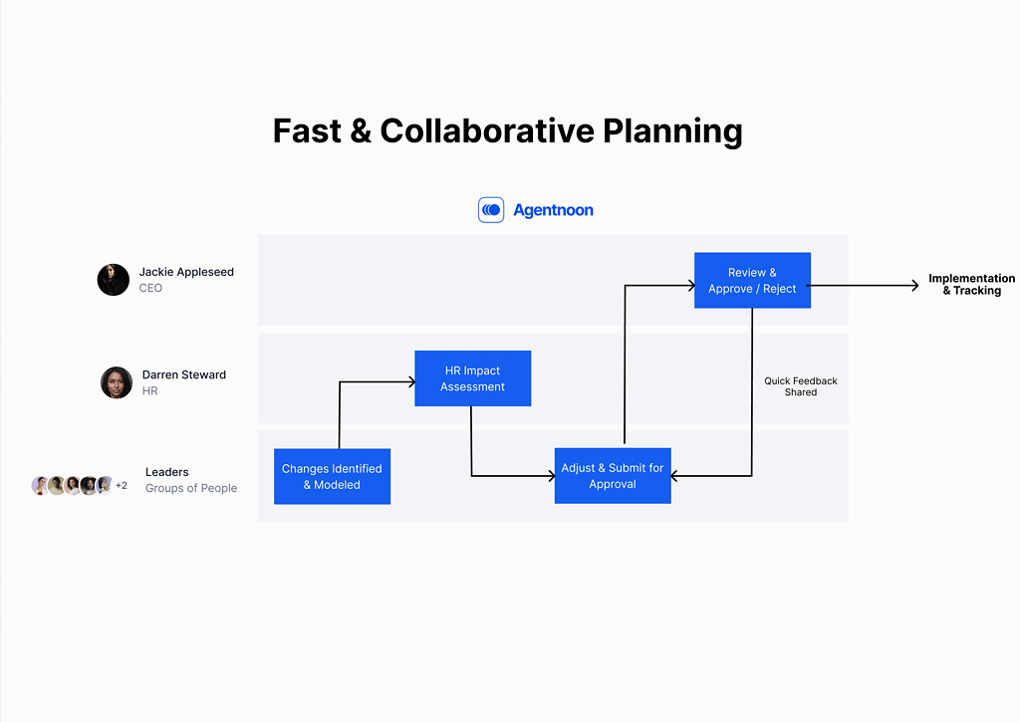
Most founders take a light approach towards restructuring whereas the correct choice is to cut once, cut deep. Another common mistake is that there is a single plan in place, with no variance. The best companies have a best case, base case & worst case plan with multiple smaller plans that can be unlocked as data arises.
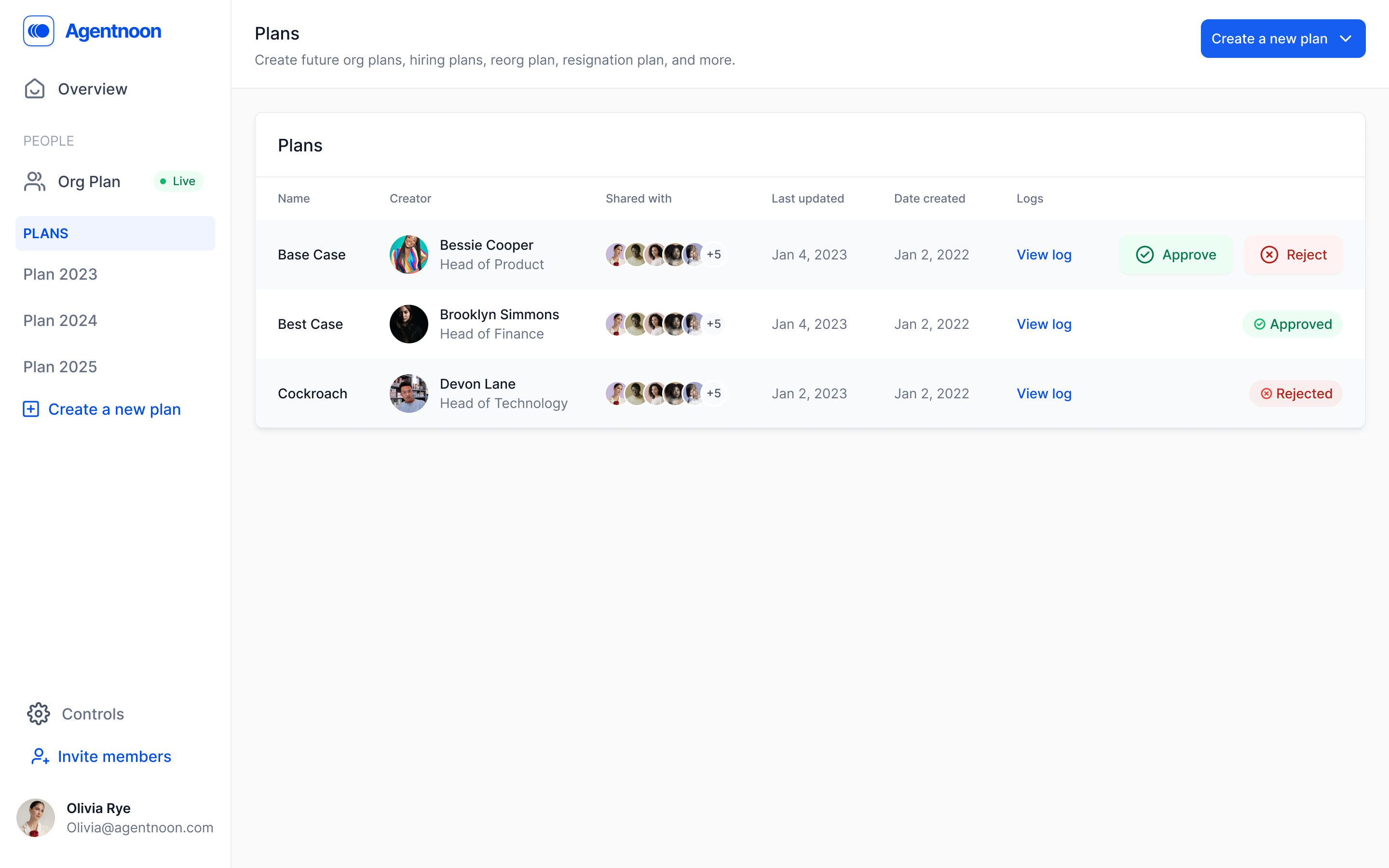
Working without good data. Most data is already old by the time it gets to a CEO, and likely colored by the perspective of the person reporting it. Sometimes, companies look at a subset of info (since it’s easier to extract) and ignore large parts because they are messy. It’s important to separate hope from facts when restructuring your business and ensure continuity to achieve the outcomes set out in the restructuring goals.
Expecting visual people to work in sheets & finance folks to work without sheets
Here’s an example of a spreadsheet that a CFO would put together for every scenario. The blue line would be revenue & the red would show spikes in people costs as certain revenue milestones are met. It’s not easy to use & accessible for all the other people in the business.
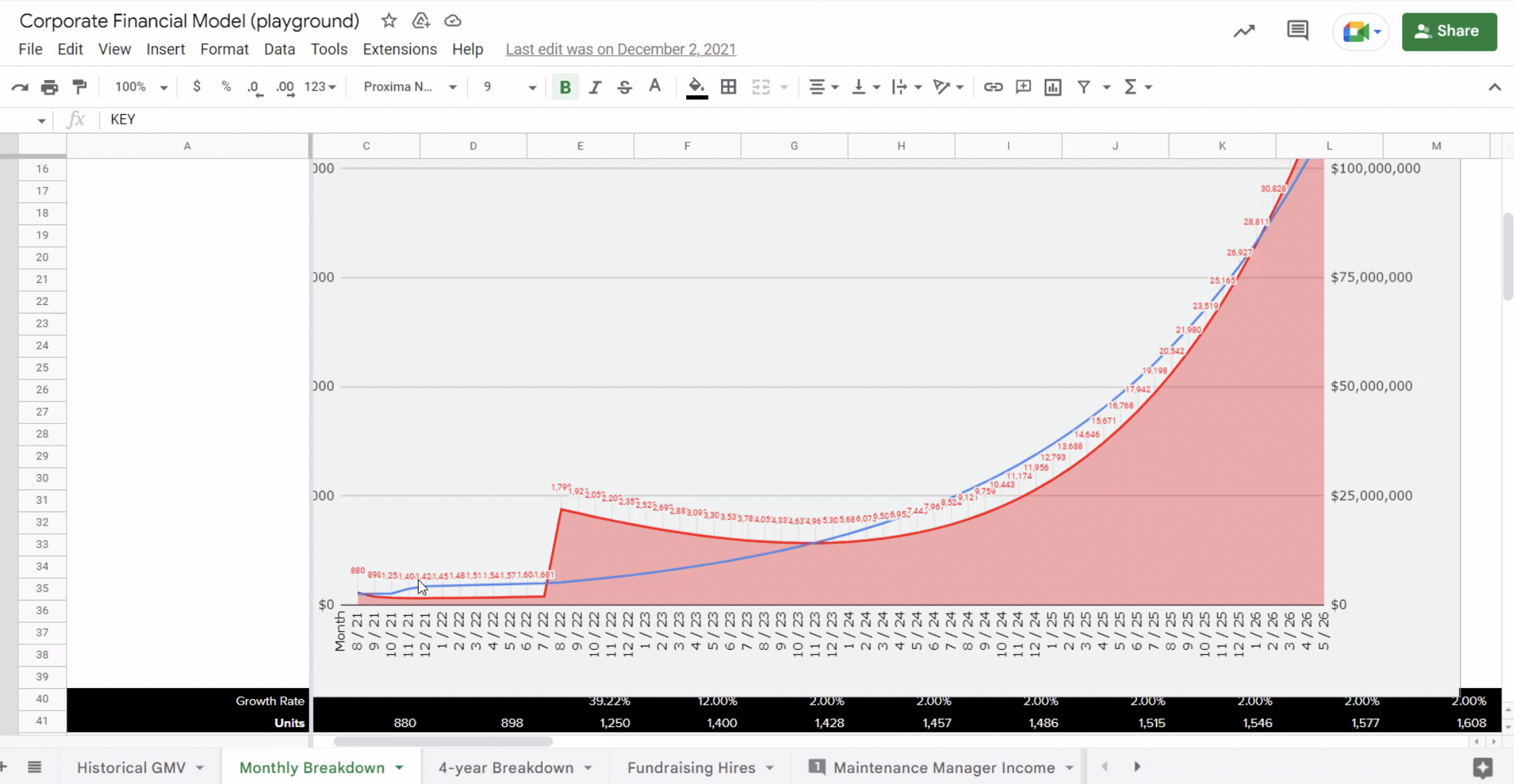
What you want is the ability to make visual plans based on the latest data, and then export it in a way that your CFO is happy with, so they can update their model. Like this:
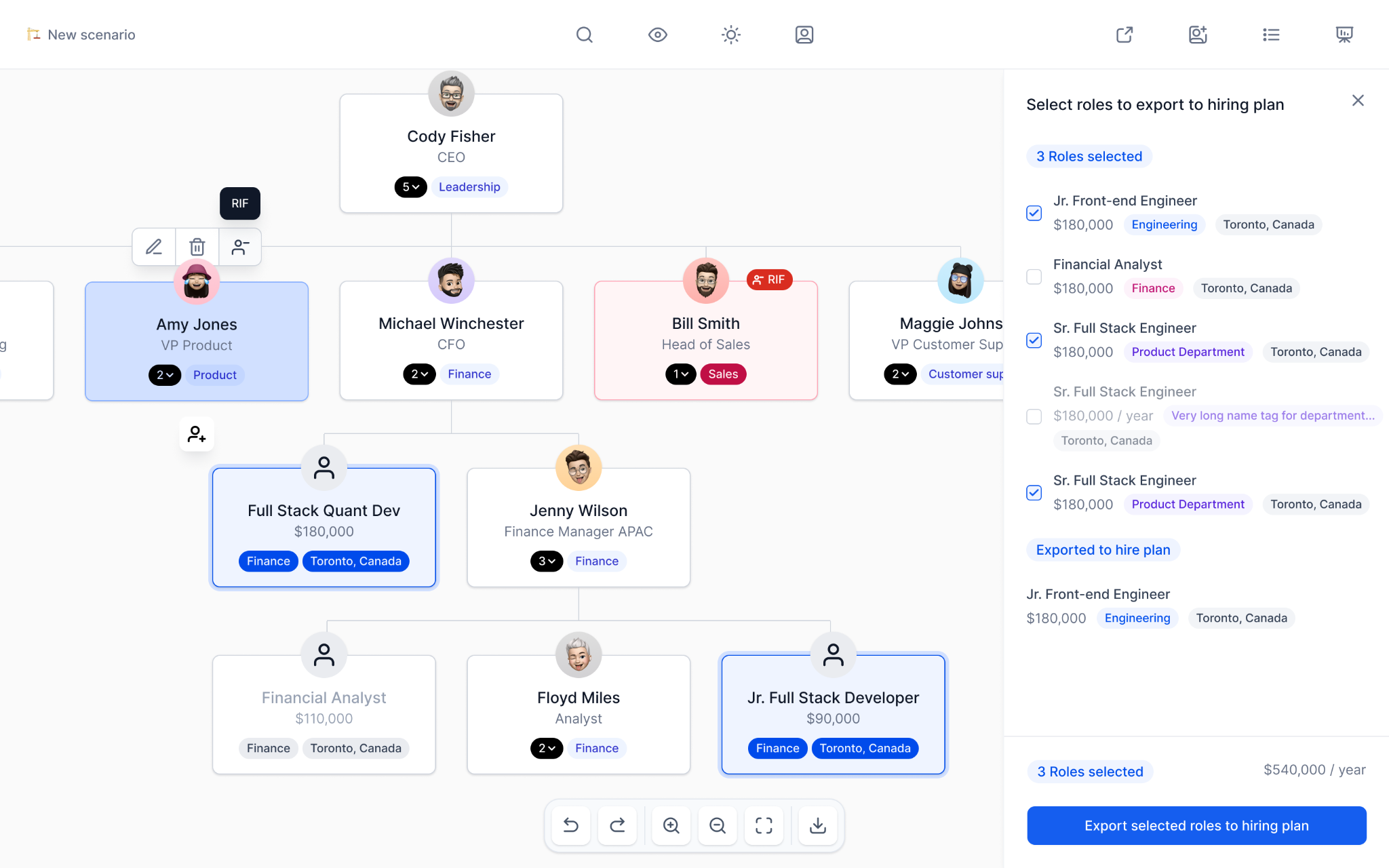
You can export this into a format your CFO can quickly include in their financial model, a spreadsheet like the one below gets generated whenever a new plan is created.
This way the CFO doesn’t have to spend a whole day deciphering & modeling out what the costs of this “re-orgv4.3” looks like before giving it a thumbs up.
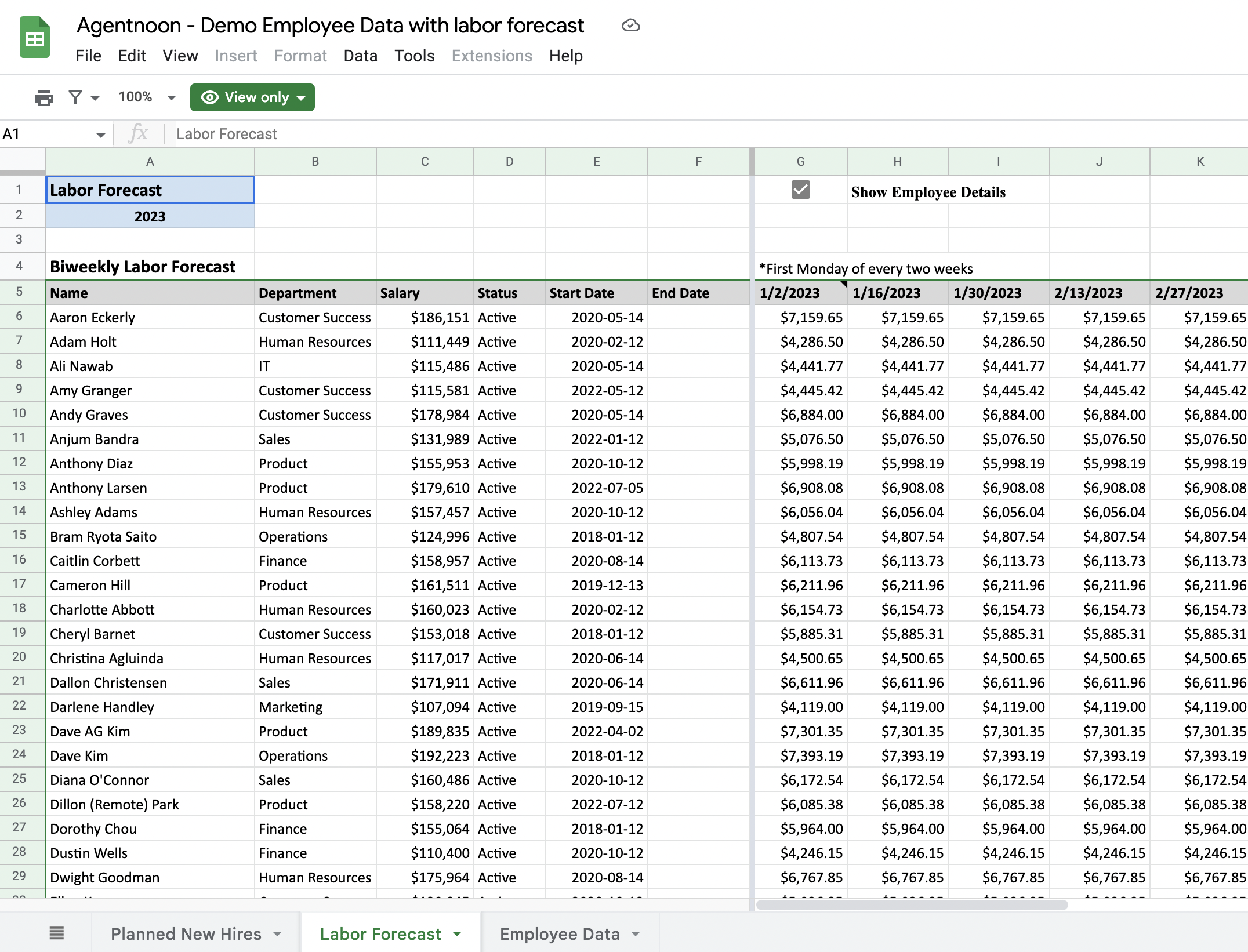
Not Tracking Changes When there are a million spreadsheets and Slack messages flying around, it becomes impossible to remember what was decided. Which leads to a lot of confusion, and errors downstream.
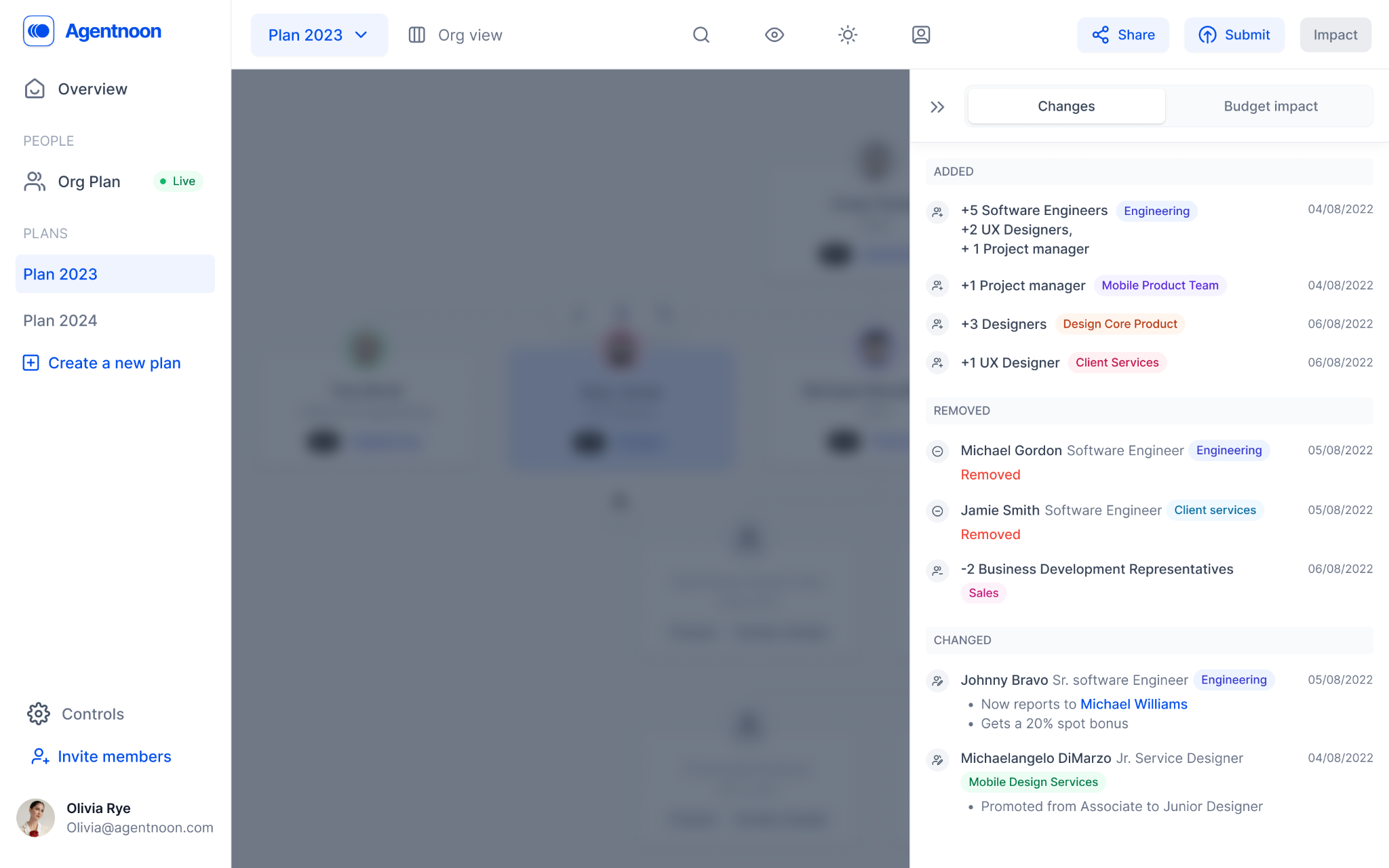
Gatekeeping after the implementation changes to plans, budgets, and committed spending is often laggy data, so it typically takes months before the company realized they are in a bigger hole than expected. A simple approval flow helps to ensure that we don’t commit any funds to plans & roles because of a leaky approval process.
Not Monitoring after the Re-org Companies post re-org default back to their old ways within a few weeks. The most common victim is often the CEO since they are supposed to bend the world to their will. It’s tough to transition from taking over the world, to surviving the next 24 months. But optimism does not matter when the company is out of money.
A simple dashboard that can show where the lines are meeting can help frame actionable next steps and track progress.
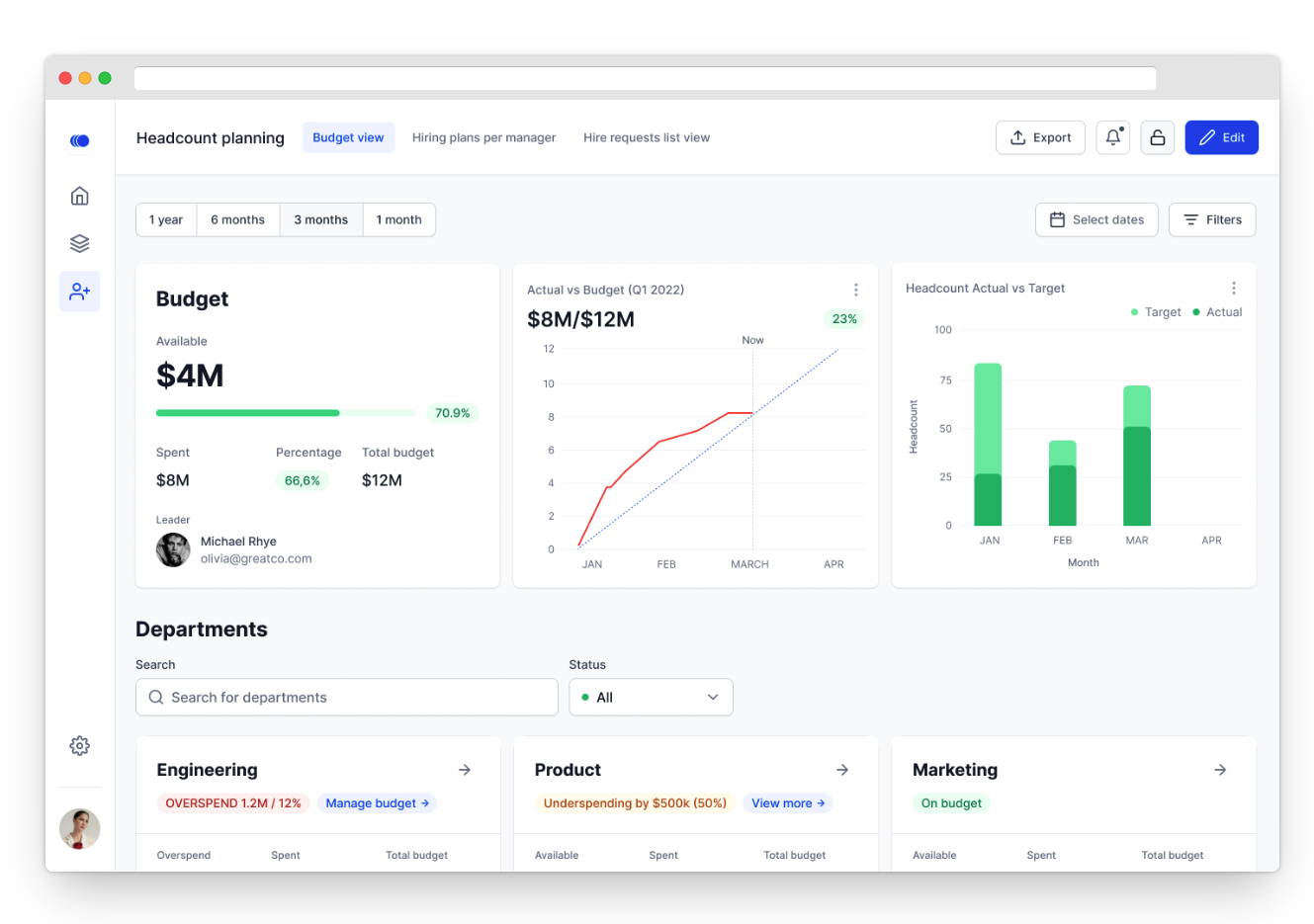
Maintaining confidential information. Suppose you are evaluating whether to counsel out a key leader in your business, and re-organize their team. The risk of them seeing that there is a plan in place (active or otherwise) to replace them will be the end of their motivation to do any meaningful work anymore. It’s important to be able to keep confidentiality on all plans at the highest levels.
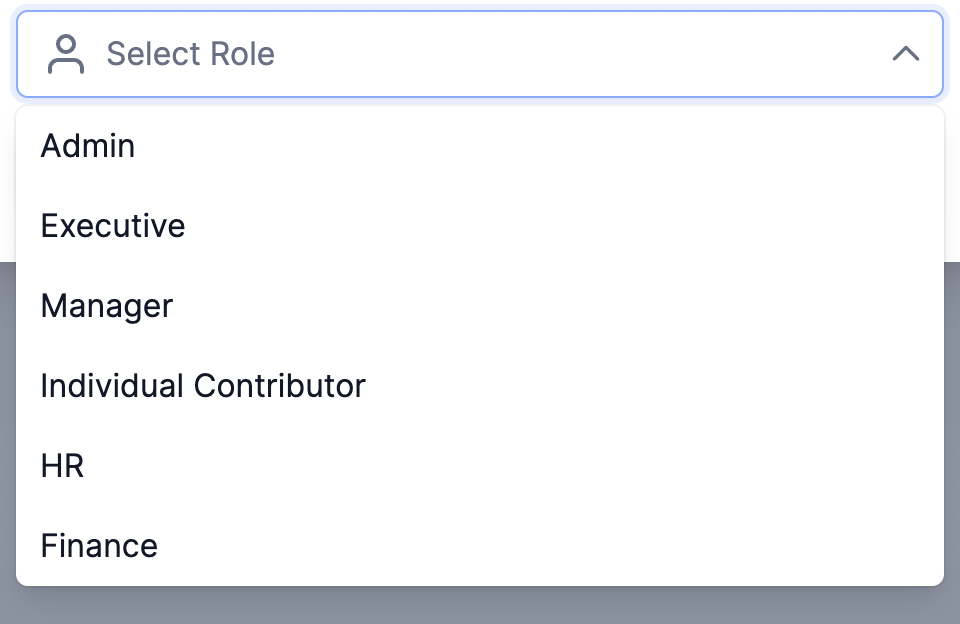
What we can fund with revenue would typically be an output of workforce planning. Workforce planning & headcount budgets are managed in broken, borderline negligent ways using conventional tools. It’s time to re-design businesses using unconventional ways to stay alive.
We’re still figuring a lot of this out, but we’re confident that we can track revenue attribution to people groups within the year. It’s a seven-figure problem for 99% of CEOs we’ve spoken to, and we’re enjoying the ride.
If you’d like to get in touch, please email founders@agentnoon.com.
Special thanks to Dave Kim, Aaqib Gadit, Brian Murray, Avlok Kohli, Ian Tien, Aditya Sheth, Hamid Rizvi, & Shayan Amin for reading drafts of this post.
Master reorg with our guide on organizational restructuring, HR leadership, and innovative organizational design for successful company...
Explore the essentials of organizational restructuring to align with evolving business goals for improved efficiency and adaptability.
Reorg is a complex but essential process for businesses seeking to thrive in this economy. The steps in this guide will help you with a successful...
